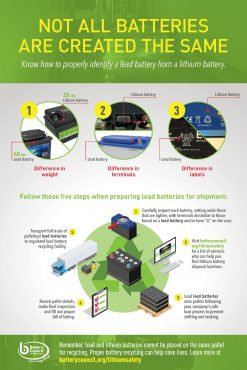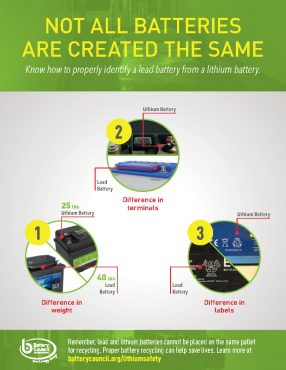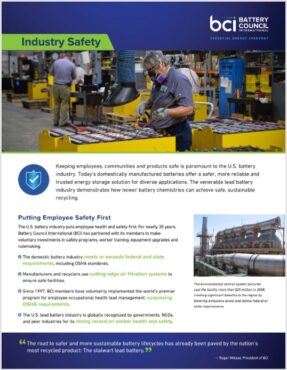Lithium Battery Safety
Lithium batteries may cause injury if they enter the lead recycling stream, posing a serious threat to recycling employees and equipment. Proper training and resources to identify lithium batteries have been developed to keep employees safe.









